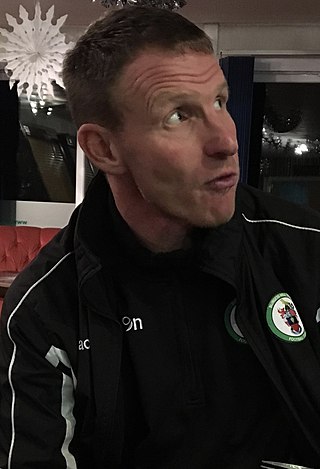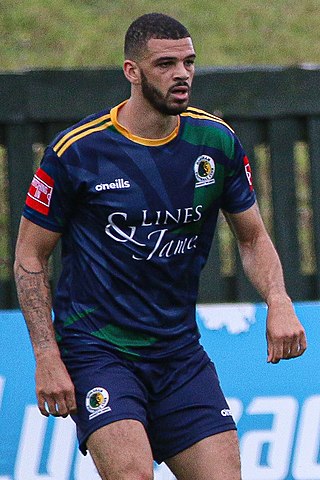History
Medieval football
There is a long tradition of football matches taking place in Sussex although the game was different from the modern codes of association football and rugby football. Two references to medieval football matches come from Sussex in 1403 and 1404 at Selmeston and Chidham that took place as part of baptisms. On each occasion one of the players broke his leg. [10]
Development through public schools

Led by the teachers, Lancing College created its own code of football in 1856, [11] although it may have existed before this date as many football codifications at this time were the formal recording of older practices. [3] Seen as a means of fostering teamwork, the code had 12-a-side teams. [11] A football match from 1860 involving Lancing College was recorded in the sporting newspaper Bell's Life in London . [3] In 1865 a player of the Lancing rules game described a match as "not much of a game, rather an inchoate barging match". [3] Lancing College introduced the position of goalkeeper, the only position that could use their hands. They were supported by two backs. [2]
Football is reported as having been played at Brighton College by 1859. [11] Brighton and Lancing Colleges are recorded as having played a football match in November 1860, the first by public schools in Sussex and the first in England outside of the initial seven major public schools. [12] Brighton College are recorded as having played a Brighton schools team at football in 1861. [12] It appears that the venture was not successful, largely because people outside the college had difficulty understanding the particular rules which varied from college to college. [12] In 1865 Brighton College players were criticised in Bell's Life for practices including 'throat seizing' and 'shinning'. Brighton College responded to Bell's Life by saying they were also perfectly capable of playing association-based codes too, which they did when they played Lancing College, where the visitors would adopt the home side's code. [13]
The rules followed by Brighton College were related to the rules of Rugby School. [11] Brighton Football Club was founded in 1868 by former students of Brighton College. Brighton went on to follow the codes and laws of Rugby College and the Rugby Football Union which was set up in 1871. [14] Hurstpierpoint College was also recorded as having played a form of rugby football by 1872. [15]
Association rules were adopted at Lancing College by 1871 and at Brighton College by 1873. [3] Former Lancing pupil Jarvis Kenrick went on to score the first goal ever to be scored in the FA Cup [3] as well as winning the FA Cup three years running with London-based Wanderers F.C. Several Lancing players went on to play for Tyne AFC, the elite football club in England at the end of the 1870s. [3]
Creation of the county football association and leagues

The first Horsham Football Club were founded in 1871 while the first Chichester Football Club were founded in 1873. Devonshire Park (now Eastbourne Town F.C.) were founded in 1881, the same year that Horsham F.C. were re-established. The Sussex County Football Association was created a year later in 1882. The Sussex County FA set up the Sussex Senior Challenge Cup almost immediately, from the 1882—83 season.
By the end of the 19th century the London, Brighton and South Coast Railway fielded six different teams in Sussex - Juniors, Locomotive, Rovers, Strugglers, Wanderers and Wasps. [3]
Several local leagues were set up within Sussex at the end of the 19th century - the West Sussex Football League in 1895, the East Sussex Football League in 1896, the Hastings League in 1897 and the Horsham League in 1898. [3] The Sussex County Football League was created in 1920. [4]
The Sussex RUR Cup was set up as a new county football cup in 1896–97. The cup was known initially as the Sussex Royal Irish Rifles Cup after the 1st Battalion Royal Irish Rifles who were recognised as ‘Sussex Champions’ in 1895–96 having won the Sussex Senior Cup, Brighton Shield, Charity Cup and Vernon Wentworth Cup that season.
Professional sport developed more slowly in the south of England and initially The Football League was made up of clubs only from the north of England and the Midlands. The Southern League was formed in 1894 to provide the south of England with a professional league and in 1897 Brighton United were formed as Sussex's first professional club, joining the Southern League the following year. The club folded in 1900. The following year Brighton & Hove Albion were formed and joined the Southern League. Albion won the 1909-10 Southern Football League. As winners of the Southern League, Albion beat Aston Villa, the winners of the Football League in the 1910 FA Charity Shield. [5] Albion were dubbed 'Champions of England' [5] in what is to date the only national honour for a Sussex football club. It was around this time that Albion fans began to adopt Sussex by the Sea, Sussex's county anthem. [5] [16]
Wartime
During the Second World War the winners of the Sussex Wartime Cup were awarded the Sussex Senior Cup. The Sussex Wartime Cup took place on a league basis and a competition was held in every year during the Second World War except for 1940-41 when no competition for the Sussex Senior Cup was held.
Post-War period

1979 saw Brighton become the first Sussex side to win promotion to the top flight of English football, and won promotion to the Premier League in 2017. Crawley Town became Sussex's second team to gain Football League status in 2011.
The Brighton, Worthing & District Football League (levels 12-14) was created in 2014 following a merger between the Brighton, Hove & District League (formed 1903) and the Worthing & District League.
In 2015 the FA rebranded the Sussex County Football League as the Southern Combination Football League. This followed the controversial removal of Crowborough Athletic to the Southern Counties East Football League (formerly the Kent Football League) as the FA sought to increase the number of clubs playing in that league. [17] [18]
In August 2015, two Worthing United players, Matthew Grimstone and Jacob Schilt, were among those killed when an aircraft crashed on the A27 road near Shoreham Airport. [19] They were driving to the Robert Albon Memorial ground to participate in a match against Loxwood, which was consequently called off. [20] The crash took place close to Albion's training centre at Lancing and Grimstone worked as a member of the grounds staff at Falmer Stadium, while Schilt was also an Albion supporter. [21]
Development of women's football

Initially made up of six football clubs in Sussex, the Sussex Martlets league for women's football was created in 1969 by Norma Witherden. In later years the league expanded to include further clubs from Sussex as well as clubs from Kent and Surrey and in 1990 the league was renamed the South East Counties Women's Football League. It now forms steps six to ten of the pyramid system for women's football in Sussex. [22]
In 2017 Lewes became the world's first professional or semi-professional football club to pay women and men equally. [6] [7] The club were then admitted to the FA Women's Championship, the second tier of women's football in England. In the same season Brighton & Hove Albion became Sussex's first full-time professional women's team and won promotion to the FA Women's Super League, the top tier of women's football, for the first time. [8] [9]











